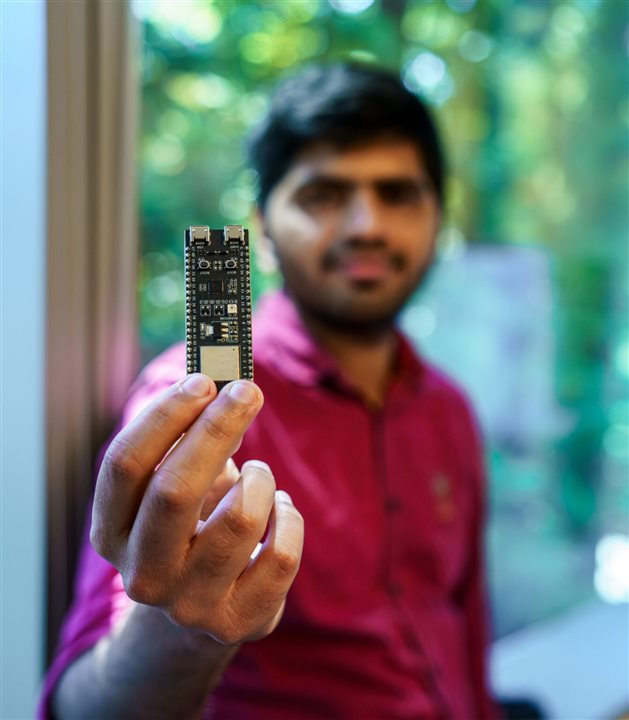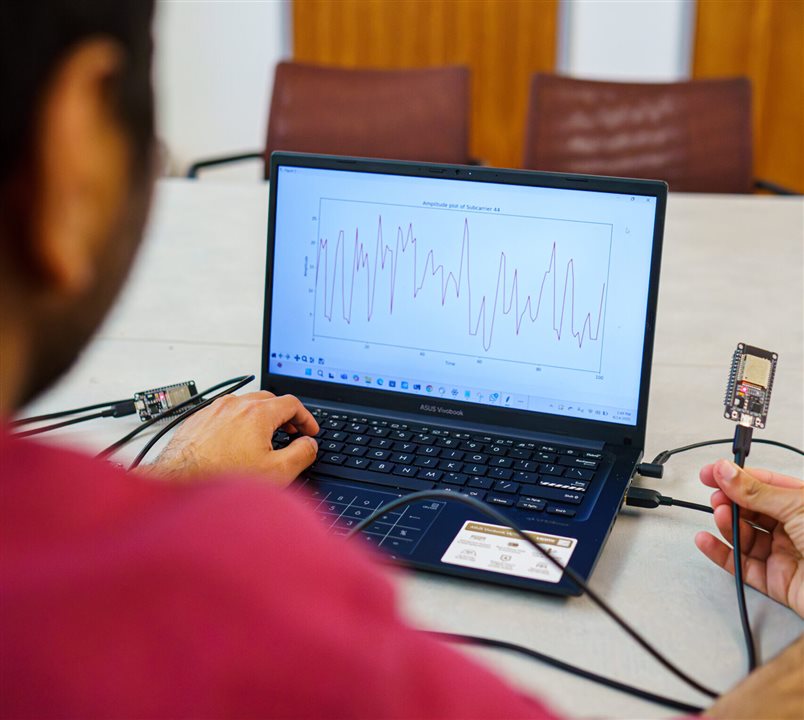
The team used an affordable ESP32 chip to monitor heart rates. (Image Credit: Erika Cardema/UC Santa Cruz)
Researchers at the University of California, Santa Cruz, have developed Pulse-Fi, a new technology that uses WiFi signals to monitor heart rate—all without using wearables. The team's proof-of-concept relies on inexpensive WiFi devices and a machine learning algorithm to work, indicating that it may be used by people at home.
The team's Pulse-Fi signal processing and machine learning algorithm runs through a WiFi transmitter and receiver. Their algorithm is trained to detect extremely faint WiFi signals that a human heartbeat may change. It filters different signal variations in its environment or from other factors like motion. "The signal is very sensitive to the environment, so we have to select the right filters to remove all the unnecessary noise," Ph.D. student Naya Bhatia said.
Over 100 volunteers participated in the team's experiments. Processing signals for five seconds allowed the team to measure their heart rate precisely. Once they monitored for five seconds, the system produced half a beat per minute of error. And the precision increased as the monitoring time went on even longer.
Additionally, those participants went through the experiments with 17 different body positions, including standing, sitting, lying down, or walking. Despite the variations, the system still worked with high accuracy. The technology also used low-cost ESP32 chips and Raspberry Pi chips, which outperformed the ESP32 chips.

The team proved that their Pulse-Fi technology uses WiFi signals to monitor heart rates. (Image Credit: Erika Cardema/UC Santa Cruz)
The researchers discovered the system demonstrated precise measurements even if the participant was three meters away from the device. "What we found was that because of the machine learning model, that distance apart basically had no effect on performance, which was a very big struggle for past models," visiting researcher Pranay Kocheta said. "The other thing was position—all the different things you encounter in day-to-day life, we wanted to make sure we were robust to however a person is living."
However, when using the ESP32 hardware, the team couldn't find data to show how a human heartbeat changed the WiFi signals. They developed a dataset and combined an oximeter with the ESP32 system to collect ground truth data. Both the Pulse-Fi and ground truth data were combined to train a neural network to determine if the heart rate caused WiFi signal changes.
Using another dataset, the team tested the Pulse-Fi technology on a Raspberry Pi. According to the researchers, this Raspberry Pi device generated an extensive dataset for heart monitoring via WiFi signals.
The team is researching ways to improve this technique for breathing rate monitoring. They believe those capabilities can help diagnose various health conditions, such as sleep apnea.
Have a story tip? Message me at: http://twitter.com/Cabe_Atwell
